The content of the article
Normally, during conception, the sperm enters the vagina, then through the cervix into the uterus. Then, in the fallopian tubes, fertilization occurs - the sperm merges with the egg. A zygote is formed - a unicellular embryo, that is, the first stage of human development. A fertilized egg goes down the tubes into the uterus and begins to develop there.
But if for some reason the zygote does not enter the uterus, but gets stuck at some stage of the path, the fetus begins to grow in the wrong place and an ectopic pregnancy is diagnosed. In 98% of cases, an ectopic pregnancy develops in the tubes, however, in a rare case, a fertilized egg can be in the ovaries or abdominal cavity.
An ectopic pregnancy is quite dangerous. After all, the embryo develops at a rapid pace and can simply break the tube with its growth, which leads to severe internal bleeding. This can lead to irreversible consequences. Therefore, it is very important to determine the presence of an ectopic pregnancy in the early stages. The future reproduction of a woman and even her life depends on this. But first we’ll try to figure out what can lead to such a pathology.
Causes of Ectopic Pregnancy
- Chronic inflammatory or infectious gynecological problems. Infectious diseases of the reproductive system often lead to disruption of the fallopian tubes - they are not reduced enough to push the fertilized egg into the uterus. Because of this, the egg simply can not go to its destination and is fixed where it is stuck. If a woman suffered from inflammation of the uterus and appendages, adhesions, scars and narrowing can form in the tubes, which impede the normal passage of the egg.
- Surgery is another factor that can cause an ectopic pregnancy. This is due to the fact that after the operation, the abdominal organs can be changed, which can interfere with the normal course of a healthy pregnancy.
- Congenital pathology of the tubes. Some women have an inborn pathology of the tubes, the tubes can be very long, narrow, winding, or completely impassable. This makes it difficult for the egg to pass through the tubes.
- Tumors Regardless of whether the tumor is benign or malignant, it can interfere with the passage of the egg through the tube simply by squeezing it.
- Hormonal disruptions. Frequent and uncontrolled use of hormonal contraceptives (especially for intrauterine devices) leads to a violation of the normal hormonal background of a woman. As a result, the mobility of the tubes decreases, the tube cannot push the egg into the uterus.
- Weak sperm. Sometimes it happens that the sperm that fertilized the egg is weak enough, and the zygote is simply not able to move through the pipes.
Very often an ectopic pregnancy develops after an invasion of the body in the past - after an artificial abortion.
How to determine an ectopic pregnancy by the first signs
Symptoms of an ectopic pregnancy generally do not differ much from the first signs of a healthy pregnancy. The woman also begins to experience toxicosis, she has a delay in menstruation, the test shows two stripes. A woman feels frequent urge to urinate, her breasts are poured and her basal temperature rises.But how to distinguish a healthy pregnancy from an ectopic pregnancy by the first signs? Here are a few symptoms that are characteristic of an ectopic pregnancy.
- Scanty spotting spotting character. Often they are brownish in color. After a pipe rupture, internal and uterine bleeding may occur.
- Pain. This is the main symptom of a malfunction in the body. The pain can be cutting and stitching, aching and sharp. Often the pain is localized on one side of the lower abdomen, namely in the tube where the egg is located. With abdominal bleeding, the pain can be given to the anus. Pain can also occur during urination or bowel movement. The pain intensifies or weakens with movement or a change in body position.
- Due to the large loss of blood in a woman, anaphylactic shock occurs. She feels apathy, drowsiness, can lose consciousness. In addition to this, her skin turns pale, her blood pressure drops, her pulse slows, her head is constantly spinning.
- The abnormal course of pregnancy can also be indirectly determined by a pregnancy test. Everyone knows that the test responds to the level of human chorionic gonadotropin. The level of hCG hormone normally increases with the development of pregnancy very quickly. And if in the early stages the second strip on the test was weak and transparent (low hCG), then the next day the second strip will be much sharper. And with an ectopic pregnancy, the level of hCG remains small over time, so the pregnancy test shows a transparent and fuzzy strip even the next day.
- There are special tests that not only respond to the level of the hCG hormone, but also on the basis of other hormonal changes, can show the risk of an ectopic pregnancy and the risk of a miscarriage. Everything is based on immunochromatographic analysis.
How to diagnose an ectopic pregnancy
If you suspect the presence of an ectopic pregnancy, you should immediately consult a doctor. After all, a pregnancy discovered in time can save the pipes from rupture. To verify the presence or absence of an ectopic pregnancy, the doctor may prescribe tests for the hCG hormone.
- HCG hormone. As was said, the hCG hormone normally increases several times every two days. If the indicators of this hormone do not grow or grow slightly - this is one of the serious indicators of the presence of an ectopic pregnancy.
- Ultrasound Already at 6-7 weeks, a fetal egg can be seen on an ultrasound machine. Using ultrasound, the doctor determines the location of the fetal egg. If no seals are found in the uterine cavity, the specialist expands the search area and, during an ectopic pregnancy, finds an accumulation of free water in one of the tubes. If even the egg itself is not visible, the tube during ectopic pregnancy is expanded. But sometimes a specialist can take a blood clot as a fetal egg in the uterus, especially in the early stages of pregnancy 4-5 weeks. In this case, laparoscopy is necessary for a more accurate result.
- Laparoscopy - This is a modern and accurate way to diagnose and treat abdominal organs. Laparoscopy is a procedure in which a tiny incision is made in the patient’s abdominal cavity, into which the thinnest tube with a lens at one end is inserted. On the other hand, there is an eyepiece through which you can observe the picture of the insides of the patient. If instead of the lens at the end of the tube there is a mini-video camera, then the image is projected onto the screen. Laparoscopy is considered an accurate diagnostic method also because internal organs can be viewed from all angles, displacing and shifting them. This procedure is accurate and reliable for detecting an ectopic pregnancy.
- Puncture. This method is quite old-fashioned due to its soreness and unreliability. Its principle is as follows.Through the anus, a woman is injected with a needle into the uterine cavity. From there, fluid is taken for analysis. If blood is detected in the liquid, this indicates the presence of an ectopic pregnancy in the woman's body. However, this diagnostic method is not 100% reliable, in addition, it is very unpleasant and painful. Therefore, today it is practically not used.
How to remove an ectopic pregnancy
Diagnosis confirmed the presence of an ectopic pregnancy in the body of a woman. What's next? And then a laporoscopic surgery to remove the fetal egg from the tube is necessary. An ectopic pregnancy never goes away without cleaning. If possible, doctors try to save the integrity of the tube, but if it is completely torn, it is removed along with the fetal body.
- If the fetal egg is near the entrance to the tube, do Milking - squeeze the egg without damaging the tube.
- If extrusion is not possible, salpingotomy is performed. In the place where the ovum is located, the tube is cut, the egg is removed, and the incision is sutured. If the embryo is large enough, it is removed along with part of the tube. The functional ability of the tube is then preserved - a woman can become pregnant.
- In cases of rupture of the tube, a tubectomy is performed - removal of the fallopian tube with the fetal egg. If there is a risk to the patient's life, the tube can be removed along with the ovary.
- If an ectopic pregnancy is identified in the early stages, chemotherapy is possible. A woman is given special medications (for example, Methotrexate), which dramatically suppress fetal development. The drug is used up to 6 weeks of fetal development, while it has no cardiac activity. However, methotrexate is a rather crude medicine that has many side effects - from damage to the kidneys and liver to complete hair loss. This type of treatment is almost never used in Russia. This type of treatment is possible only for women who no longer plan to become mothers.
After the operation, it is very important to undergo a course of rehabilitation treatment, which will prevent the appearance of adhesions and scars on the pipes. After all, any obstructions in the tubes in the future can become another cause of ectopic pregnancy. After removal of an ectopic pregnancy, at least six months can not plan the conception of a child.
If a woman has suffered from an ectopic pregnancy, this does not mean that she will not be able to become a mother. After all, every woman has two fallopian tubes, and if in the worst case one tube was removed, the second, completely reproductive one, remains. Most women who survived an ectopic pregnancy were subsequently able to give birth to healthy babies. And only 6-8% remain infertile after an ectopic pregnancy.
An ectopic pregnancy is not a sentence. The conception and bearing of a baby is a long and complex process during which anything can happen. Ectopic pregnancy occurs only in 2% of cases of the total number of all pregnancies. And if this happened to you, do not despair. Timely diagnosis and proper treatment will restore your body. And then you can turn this difficult page of your life and live on, becoming a mother repeatedly!
Video: ectopic pregnancy - signs, symptoms and medical advice



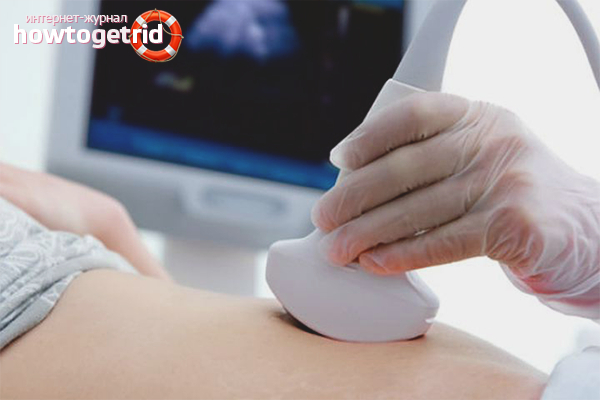


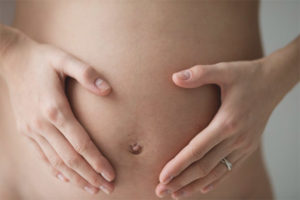

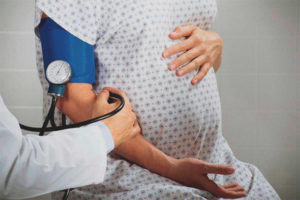
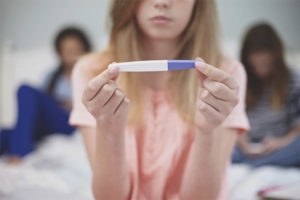
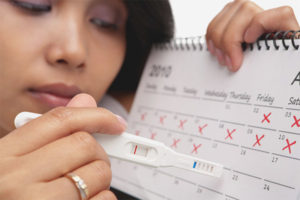

Submit